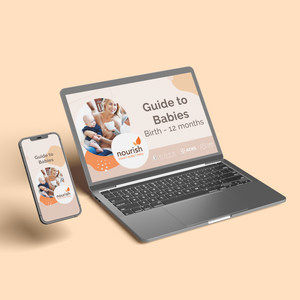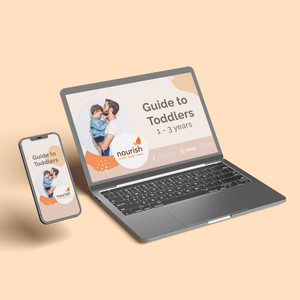Key points
- Epidurals are a very effective form of pain relief.
- Having an epidural can allow a mother to rest and sleep, conserving her energy for pushing.
- An epidural is typically started when the cervix is 4-5 centimetres dilated.
- An epidural can cause contractions to slow down and make contractions less intense.
- An epidural can slow a woman’s labour and increase the risk of needing forceps or a caesarean section.
What is an epidural?
An epidural is an anaesthetic procedure, where a local anaesthetic is injected into the epidural space near the spinal cord. An epidural anaesthetic numbs the nerves so pain cannot be felt in certain areas of the body.
An epidural during labour helps to block pain signals from contractions. If birth intervention is needed, e.g., caesarean or forceps, an epidural is a common form of anaesthetic.
How is an epidural done?
An anaesthetist administers an epidural and works in partnership with you and your maternity care provider to offer you choices about pain relief. You will need to have an intravenous (IV) drip inserted first.
The anaesthetist will ask you to either sit up on the side of the bed, bending over from the waist, or lie on your side with your legs bent up. Getting into the right position may be uncomfortable, especially as it will be difficult to bend with a big belly. First, they may clean the area of skin around the site where the needle will go in.
An epidural needle will be inserted into your back and a fine plastic tube will then be inserted through the middle of the needle. Once the tubing is checked to be in the right place, the needle will be removed.
The length of tubing will be taped onto your back and will provide the entry point for anaesthetic medications to be given. Because it’s important for your anaesthetist to check they have the right location, they will first inject a small amount of anaesthetic through the small tube which has been placed into the epidural space. Once they are certain the tube is positioned correctly, they will inject more anaesthetic until it’s working well.
An epidural anaesthetic takes between 15-30 minutes to work.
When are epidurals given?
Epidurals are usually given in the first stage of labour. However, they can be given during any stage. Generally, when the cervix is 4-5 centimetres or more dilated, active labour is happening and this is the peak time for an epidural.
Sometimes it’s not obvious that an epidural is needed until the second stage when it may become clear that birth intervention is necessary.
Why would I need an epidural?
You may not have included an epidural in your birth plan or thought about it seriously until you are in labour. Many women plan not to have pain relief during their labour, though change their mind when they are having contractions. Your maternity care provider may recommend you have an epidural, though the ultimate choice is yours.
What are the benefits of having an epidural?
There are many benefits to having an epidural, though one of the major ones is that they allow for a mother to stay awake and experience less pain during her baby’s birth.
Epidurals are also:
- A very effective form of pain relief.
- Support a mother’s enjoyment of her labour and to feel more of a sense of control.
- Can be ‘topped up’ in case more pain relief or a caesarean section is needed.
- Can allow a mother to sleep if she’s having a long labour. This can be helpful for her to save energy for pushing in second stage.
- May help to lower blood pressure if it’s high.
- Don’t cause sleepiness.
- Avoids having a general anaesthetic for a caesarean section which involves more risk.
What are the risks of having an epidural?
An epidural is not without risks, though they are considered a safe procedure for most labouring women. They are a routine procedure in most (large) maternity hospitals and are widely accepted as an effective option for pain relief.
It’s important to not lie flat on your back once the epidural is in place. This can cause a drop in blood pressure. The best position is to sit up or lie on your side.
It can take several hours for the numbness/weakness to wear off after having an epidural. It’s important not to try and get up and/or walk unless you’ve first been checked by your maternity care provider.
Other epidural risks:
- They may not be effective. It’s possible to have a ‘failed’ epidural where pain is not blocked completely.
- Some women develop a bad headache 24-48 hours after having an epidural and occasionally it’s necessary to have a procedure known as a blood patch where a small sample of the woman’s own blood is injected into the space where the epidural was inserted.
- There is a small risk of developing an infection.
- You may have problems passing urine (wee) and need a catheter inserted into your bladder.
- Bleeding, bruising and tenderness at the epidural site. This is more common for women who have been taking blood thinning medications.
- Epidurals can slow down labour and cause contractions to become weaker. One commonly used strategy if this happens is to have an intravenous drip of oxytocin – a hormone which causes the uterus to contract. The second stage of labour may also be prolonged after having an epidural and an assisted birth becomes necessary.
Do epidurals increase the risk of birth intervention?
It has been shown that epidurals can slow a woman’s labour and increase her chances of needing to have an oxytocin drip. When the second stage of labour slows down, this may then increase the chance of needing a forceps delivery.
This slowing of labour is felt to be related to the effect of an epidural on the labouring mother’s pelvic floor muscles, guiding the baby’s head as it enters the vagina in the optimal position. If these muscles aren’t working as they need to, failure to progress in labour may result. This can then increase the risk of needing forceps or a caesarean section.
Is there any reason why I wouldn’t be able to have an epidural?
Some women who’ve had previous back surgery cannot have an epidural.
If you’ve had problems with blood clotting or infection, you may need to discuss alternative pain relief options.
Not every hospital offers epidural anaesthesia, especially small, rural hospitals who don’t have access to an anaesthetist or obstetrician.
What is done in an epidural ‘top up’?
A top up of anaesthetic can be given via the catheter which is already in place in your epidural space. If you start feeling uncomfortable, and as if the epidural is wearing off, speak with your midwife or obstetrician. They will be able to top up your anaesthetic when it is needed.
You may also have a constant flow infusion which is keeping you comfortable.
Another alternative is to have a patient controlled anaesthetic option. This involves pushing a button which then releases a small amount of anaesthetic as it is needed.
Speak with your midwife or obstetrician about what’s right for you. Initiate a conversation about epidurals while you are pregnant so you’ve got some understanding of what’s involved before you’re in labour. It can also be useful to explore pain relief options, including epidurals, during antenatal classes or through a birthing course.
About the Author:
Written for Nourish Baby by Jane Barry. Jane has qualifications in general, paediatric, immunisation, midwifery and child health nursing. She holds a Bachelor Degree in Applied Science (Nursing) and has almost 35 years specialist experience in child health nursing. She is a member of a number of professionally affiliated organisations including AHPRA, The Australasian Medical Writer’s Association and Australian College of Children and Young People’s Nurses.
References
Epidural anaesthetic | healthdirect
Epidurals | Health and wellbeing | Queensland Government (www.qld.gov.au)
https://birthinternational.com/epidurals-real-risks-for-mother-and-baby/
Our Products
-

01. Guide to a Healthy Pregnancy
$55 -

02. Positive Birthing Course
$55 -

03. Infant Feeding Guide
$55 -

04. Baby Sleep Guide - First 12 Months
$55 -

05. Toddler Parenting Course 1 - 3 Years
$55
-
 When to Start Antenatal Classes?
When to Start Antenatal Classes?
Becoming a parent is an incredible milestone, but it comes with a host of changes that can be daunting, especially for first time parents. Antenatal classes are all about offering expectant parents the education they need to make informed decisions, look after their bodies and care for their newborn babies. While you probably already have a long list of things you need to accomplish during your pregnancy, it’s a good idea to make time to attend antenatal classes.
-
 Development Milestones 4-8 Months
Development Milestones 4-8 Months
As they reach the middle of their first year, you'll start to see bigger leaps in their growth and ability!
In this article, we’re going to discuss your baby’s developmental milestones between 4-8 months, and what you can expect along the way.





 When to Start Antenatal Classes?
When to Start Antenatal Classes?
 Development Milestones 4-8 Months
Development Milestones 4-8 Months








